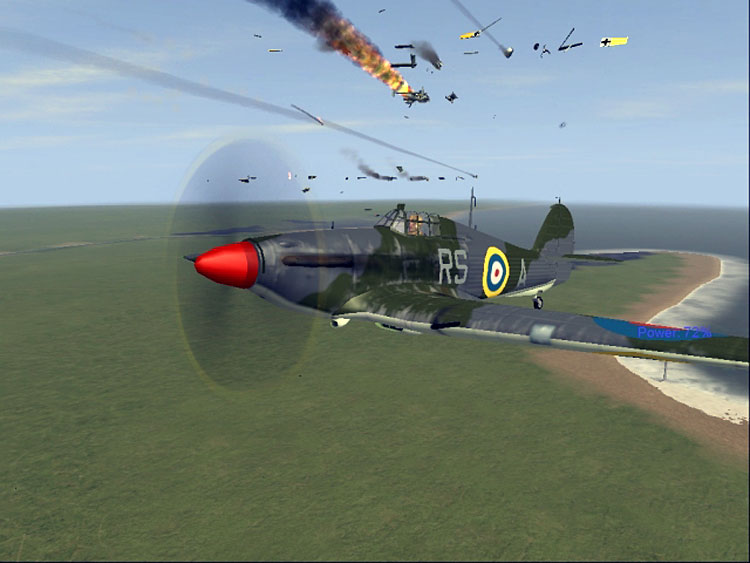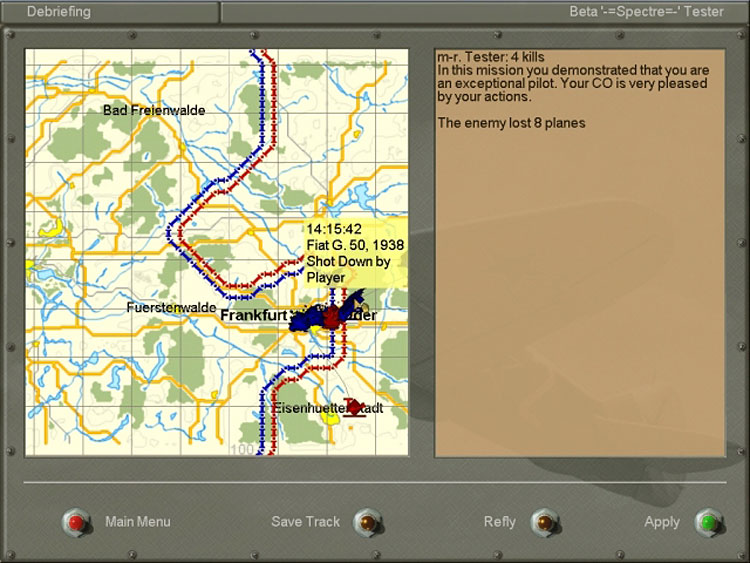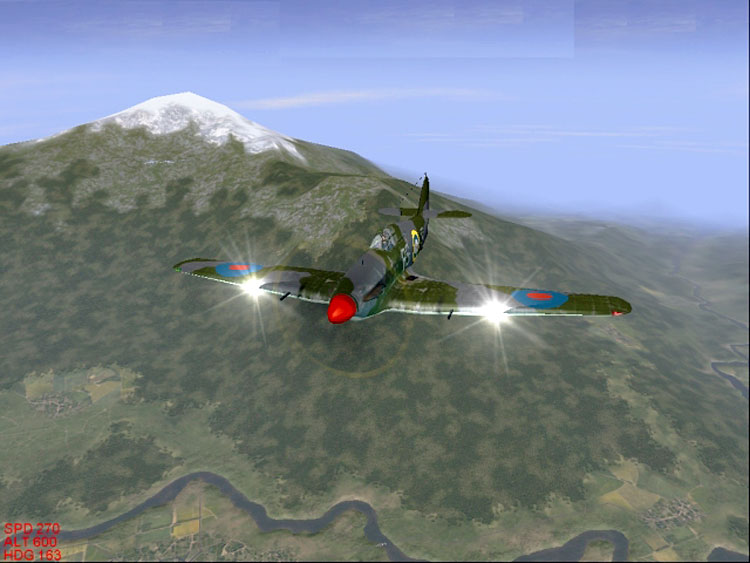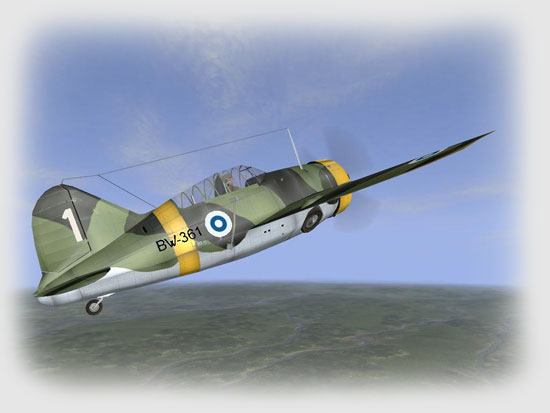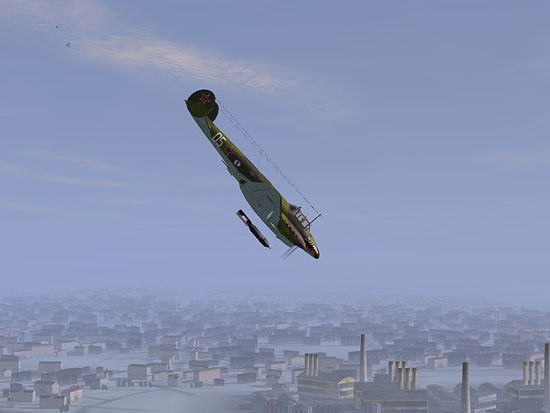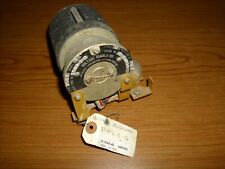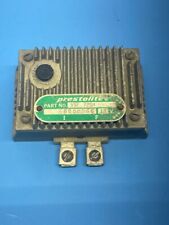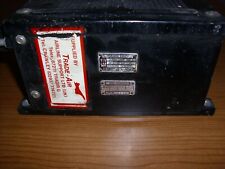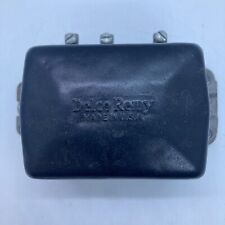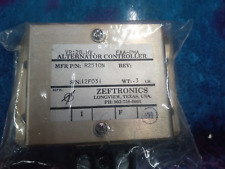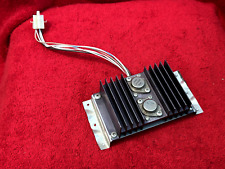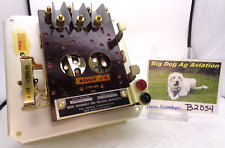In our first retrospective article on IL-2 we covered the release of the original IL-2 Sturmovik and took a walk down Oleg Maddox’s memory lane.
Gone, But Not Forgotten
Following hot on the heels of the successful IL-2 Sturmovik, came the Forgotten Battles release in 2003.
This stand-alone title in the series came slightly more than a year later and was most notable for the wide range of aircraft now modeled: 80 different flyable aircraft, counting all variants, and a total in-game library of 129 types, including for the first time multi-engine and jet or rocket propelled flyable aircraft. So many aircraft were modeled, with such fidelity, that several users published aircraft guides and libraries to provide easier ways to navigate the long list. U.S. types were included for use in the mission designer, such as the P-47 and P-51, satisfying the calls from fans of these types for the ability to fly their favorite machines in the IL-2 world.
 Graphics received a welcome update – with the SimHQ reviewer, Vince Putze, saying “FB’s aircraft graphics are legendary. They are absolutely stunning, so much so that I created a few interesting screenshots that I use for Windows wallpapers on my desktop.”
Graphics received a welcome update – with the SimHQ reviewer, Vince Putze, saying “FB’s aircraft graphics are legendary. They are absolutely stunning, so much so that I created a few interesting screenshots that I use for Windows wallpapers on my desktop.”
An enhanced quick mission designer gave players more options, including the ability to set up fights between non flyable US types like the P-51 or P47, and Luftwaffe opponents. But the big facelift for offline players came to the campaign engine, which introduced Starshoy’s random campaign mission generator.
The new dynamic campaign mode enabled the pilot to pick an air force and timeline and follow a moving front battle with missions generated on the fly. A single pilot career, comprising a few campaigns, could last as long as 100-200 sorties depending on when it was started. For single player advocates, this was just what the doctor ordered after the disappointing static campaign of the original IL-2.
This was also the title where 1C Maddox introduced “complex” engine management, taking the sim closer to full realism. While prop pitch and radiators had been modeled in IL-2, mixture, superchargers at altitude, War Emergency Power, and controls for each engine were implemented in Forgotten Battles. Players particularly enjoyed the way this was implemented on historically cantankerous machines like the Me-262, where an impatient hand on the throttle during take off and spooling up, would result in a quick ride to the moon for the pilot.
Through the work of third-party developers, players could fly heavy bombers like the B-17 for the first time, sitting in the pilot seat, or manning the gun and bombardier positions, in a simulation advance that rivaled stand alone sims of the time like B-17 “The Mighty 8th”. NaturalPoint TrackIR 2DoF compatibility was implemented.

Complex engine management was introduced, enabling simulation of the cantankerous engines of the Me262.
Controversies about the flight models started to emerge though – with fans of the Allied machines claiming the Russian developers had given the VVS aircraft superpowers. The little I-16 Polikarpov was noted to be virtually indestructible by the SimHQ reviewer! Foibles in the AI, which a couple of years earlier had been regarded as revolutionary, also started to annoy players. “A few AI idiosyncrasies tend to be frustrating… like AI wingman that sometimes totally disregard flight lead command, AI bandits that can ‘see you’ in clouds, and AI bandits that seem to ignore all your wingman and target just you. And then there are the ‘dumb’ aspects of FB’s AI; like the bandit trapped at your six breaking off the attack when you dive straight down and recover just above the trees. It is almost like he can’t see you anymore. Another odd behavior is when a AI bandit attempts a ‘bug out’, he will keep flying straight and level while you blast away! No noticeable defensive reaction,” said Vince Putze at the time.
I asked Oleg to comment on these items, and he replied…
“I don’t agree about the AI. The behavior of the AI was dependent on the level (novice, veteran, etc.) that was set for each unit, as well as for the type of aircraft. If you ask the AI to do something stupid it is not supposed to do, this doesn’t means that the AI should be stupid or try to commit suicide. As it was described in the article of the time, it seemed to me that the AI the reviewer was describing was set to rookie. That is my opinion.”
“Clouds? Just like the trees without collision we made the ability to ‘see’ through clouds as a graphics option. The main reason was when we developed them it created an additional PC performance hit. We discussed it with many users and the result was we decided to keep it as a graphics option with ability to switch On/Off.”
As a result if one user recorded a track with clouds (say, where the AI wouldn’t see targets across the clouds) then another user could play that track without clouds (switched off in settings) and it created confusing play backs. It was difficult to accommodate different groups of users.”
It was a controversy that would stay with the IL-2 series right up until recent AI tweaks by Team Daidalos, as Maddox resisted calls for improved AI, claiming frequently it was still the best in the business.
Finally, the calls from across the Atlantic were heard, and in April 2004 Just Flight released Battle over Europe for IL-2 Forgotten Battles, adding flyable P-51 and P-47s, P-38s with missions and campaigns taking the player from D-day to the fall of Berlin.
Next, came the Aces Expansion Pack from the developers themselves, introducing Italian types like the G50, 3 P-51 variants, the jet powered YP-80, the P-38 and some bizarre “Secret Weapons of the Luftwaffe” types such as the Go-229 (batwing) bomber, twin fuselage Bf-109Z, and the FW190 glide bomber which carried a modified Ju88 as a guided bomb. Maps included Normandy, the Ardennes, and western Germany. Online play was generally regarded as smoother and the number of players was in the hundreds on any visit to Hyperfighter.sk.
Here is the Forgotten Battles trailer from 2003.
Looking Back with Oleg Maddox – Part 2
Fred: You introduced with Forgotten Battles, the ability for a player to use their own skin in a campaign and for the game to keep track of it. Did you ever discuss going further and make historically accurate skins for all staffeln and squadrons yourselves?
Oleg: We never had enough resources to do something like that. That was another reason for opening things to the user. We knew that collectively our fans will be able to do a lot more and a lot better than our small team could have done.
Oleg: All our projects have always been done on a shoestring budget and with no time to spare. I really wish we had the luxury to do more, to make more skins, more aircraft, more features. But we simply never had anywhere near the budgets to do everything we wanted, to hire enough people, to spend enough time. I sometimes look back on my own work and feel amazed at how much we did achieve. It’s only due to the talent and incredible dedication of my guys that this was possible. They really poured their hearts and souls into our games.
Fred: Which was your personal favorite aircraft and what made it your favorite?
Oleg: I really liked flying the Bf-109K-4 online. I was unstoppable in it.
Fred: In a 1999 interview you only talked about the IL-2 being flyable but two years later the first release of IL-2 Sturmovik included Lavochkins, MiGs, Airocobras and Yaks, FWs and 109s… and the IL-2 series eventually became legendary for modelling in high fidelity nearly every production warbird of World War II – was this a deliberate marketing strategy or something that just developed?
Oleg: Definitely not a marketing strategy. IL-2 was the love child of the team’s passions. We spent all our time working on that game, and not because we had to, but because we wanted to. If we worked for a paycheck, we could have gotten it by just making the one IL-2 flyable. We’d have still had our jobs, and the game would have been forgotten long ago.
But because the guys, myself, everyone in the team, really, really wanted to do this, and because we loved aviation so much, we went and made more flyable planes just for ourselves. We really were just making a game for ourselves, and we really enjoyed it, and that enjoyment made us do even more for it.
Fred: Obviously the aircraft featured in the IL-2 series, and their various flight models / damage models / cockpits / instruments kept people engaged for years. In the early days, there was huge debate about your decision to focus so much work on little known aircraft from the Eastern Front. What do you think of that debate now?
Oleg: We are very proud of the work we did. I believe that it was due to IL-2 that so many people are now aware of the Eastern Front, that so many other developers are doing it, and that people in the West no longer think of the Russians as the mindless horde that defeated the Germans with nothing but endless human waves.
We are very proud of Russian contribution to WWII and of Russian fighting machines. Bringing them to the audiences that never heard of them before was a wonderful thing to do.
Fred: There was much discussion of your development decision to feature so many ‘minor’ aircraft in such detail, which obviously required a lot of time and research and effort by your team. In hindsight, would you rather have focused more effort on fewer aircraft, and perhaps been able to execute more releases and expansion packs, or accelerate the time between ‘chapters’ in the IL-2 series?
Oleg: I really try not to spend time rethinking past decisions. There’s never one right way to do something; there’s only the right way to do something at the right time. If I was doing a flight sim today, and you know now I’m involved with one at the moment, I would do a lot of things different than I did in IL-2. But not because I did something wrong with IL-2, but because the world is very different today than it was back then.
For example there was some criticism of the damage model of the IL-16 and a couple of other German planes, which was later corrected. This happened because in these aircraft we used a more simple damage model that was done before we turned to more complex damage model (DM) during development of first IL-2.
I heard requests to decrease the durability of many German, Russian, American, English aircraft. In such cases I listened only to those users who were able to give me some real historical documentation that something was wrong with an aircraft.
There were for example claims that the IL-16 had a climb rate better than early BF109s and FWs… but I didn’t correct it because it was like that in reality.
Fred: There was some criticism of the combat AI in this and later titles. Looking back, do you think that criticism was fair?
Oleg: I don’t agree with the criticism of the AI – a lot of the AI was invisible to players but very important. By default in all missions, especially in dynamic campaigns, the AI level was set to middle. In general the behavior of Rookie and Ace AI was very different. The AI for its time was really great and I would say is still great when I play other games. The level and experience of the AI pilot was also tailored to several main groups:
- Fighters
- Fighter bombers
- Ground attack planes
- Bombers
In addition, for example if normally a fighter was carrying bombs, then the AI changed to fighter – bomber and it would not cover you until it had dropped its bombs on target or was under attack, etc. It was also dependent on plane type. So for the FW-190 there was a more complex picture than earlier fighters as it was a more capable aircraft.
If the player issued the command “Cover me” then it would depend on many factors, firstly on the AI level that was set in mission for your wingman or the whole wing. Lets say if the wingman was a rookie, then the “angle of his view” was more narrow, he may miss you more often or never see you at all. Or he could really make some stupid mistakes. And while a bomber would never execute your command to cover him, the AI bomber gunners would shoot any enemy planes near you.
Another example of the skill levels in action was that if the enemy was rookie and you tried to escape at low level then he would lose you because he was not as good at looking around and under his aircraft as pilots at higher levels. AI at higher levels was also better at managing fuel and trying to find a nearby base if low on fuel.
But there were some issues if the AI level was set to Ace. We did not have different AI for the Bomber pilot and AI gunners of that bomber. So we had the problem that ace gunners were shooting like snipers. We were going for compromise – decreasing in principle the skill of the pilot also decreased the skill of the gunners.
The work on AI was constant basis throughout development of IL-2 series and we listened always to feedback from our users.
For example, the AI was also able to see through mountains. This was a known issue and we planned to change it a future non IL-2 named series.
Fred: In 2007 you estimated that a non flyable AI aircraft in IL-2 Sturmovik took 1.5 months to develop, and for Cliffs of Dover (Storm of War), this had changed to six months! Ilya quoted last year one-year of development time for a flyable aircraft. Why did development times change so much as time progressed? Software and PC capabilities improved, but I would have assumed your own processes became more efficient, and you would have had access to a greater number of people to execute the projects.
Oleg: That’s how much complexity has grown. It perhaps got a little too complicated for ourselves, and was probably more complex than people could even tell.
We really did get better at doing things. IL-2 aircraft were really rather simple, and ingenious in how we cut many corners without sacrificing realism. With Cliffs of Dover, we decided not to cut any more corners, and that added a tremendous level of complexity to everything! We actually modeled the entire internal structure of each aircraft, and that wasn’t even something people would ever see. That alone, the internals, took more time to do properly than one entire aircraft in IL-2. If we guesstimated it instead, the results would be almost indistinguishable, but we liked doing it properly because that was how we wanted to do things, how we saw ourselves.
I really wish we had more time and more resources to properly finish what we started.
Fred: When you were developing the IL-2 series, you still had access to pilots who had flown these warbirds in WWII or later, for technical assistance, advice and testing. But most of these pilots are unfortunately no longer with us. Modern flight sim developers will have to live without them (just as WWI sim developers have to do today) – does this mean the flight models of sim aircraft in the future will be “less real” than those you developed for IL-2?
Oleg: As you know, we are starting a project with my good friends at Eagle Dynamics. We’re been running a kickstarter for a WWII sim on a DCS engine. The good thing about that is that they are partners with the Fighter Collection, who own a huge collection of flyable WWII planes. That means that we actually do still have access to these machines and to the men that fly them.
Of course, there is no substitute for the real thing. The men who were really there are almost all gone today. We still have their stories fresh in our minds though. We are very fortunate to have met them when we had the chance. Even if we heard a story 10 years ago, we are probably in a better place to do it justice today than back then. Of course, from a certain point of view sims are becoming less immediate, less connected to real living history; at the same time they are becoming more accurate and precise because computers are more capable today.
In Part 3, we discuss Pacific Fighters.

